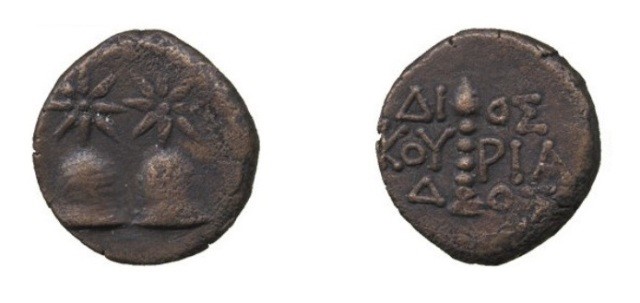Democracy In Georgia: Past And Present – Analysis
By Prof. Dr. Tedo Dundua and Dr. Emil Avdaliani
Since the end of the Soviet Union, Georgia has made vast advances in its democracy building project. Though a bumpy road, the process nevertheless can be regarded as successful especially if seen through a decades-long perspective. As a result, Georgia evolved into a parliamentary representative democratic republic with a multi-party system. The country’s Prime Minister and the Government wield executive power, while the president has only formal power.
This modern period aside, Georgia’s democracy actually has ancient roots when it enclosed small republics. They were bilingual (Graeco-Colchian) Phasis (modern Photi) and Dioscurias (modern Sokhumi) at the East Black Sea coast.
Apollo was main deity of Phasis, according to records and numismatics. Lion, symbol of Apollo, is depicted on the local coins.
Obverse: Lying hermaphrodite lion to the right/left with a head turned back.
Reverse: Kneeling female figure with a bull’s head to the right/left in quadratum incusum. http://geonumismatics.tsu.ge/en/catalogue/types/?type=4
This is Colchian (Phasian) didrachm, struck in the 5th c. B.C. Lion is depicted also on other denominations. Hermaphroditization is a result of Apollo’s merge with the local female sun.
In 1899 near the Kuban river in Zubovka village a silver cup with the following inscription was found: “I belong to Apollo-Hegemon, who is in Phasis”. The inscription dates to the 5th c. B.C., or the beginning of the 4th one. All the scholars unanimously agree that the cup was dedicated to the Apollo’s temple which presumably existed in Phasis.
Although lions depicted on Colchian (Phasian) coins are most undoubtedly associated with the Apollo cult, we should not forget that the main deity of the Georgian pagan pantheon was the sun. Lion is generally considered as the sun’s symbol. At the same time, in the beliefs of the Georgians, the sun is considered as female. If we remember that a hermaphrodite lion is depicted on Colchian didrachm, then it is possible to propose hypothesis: did the Greeks strike the coin type with the obverse depiction meeting the two ethnic groups’ (Colchian and Greek) interests, because the depiction of lion is semantically linked to Apollo and one of the main deities of the Georgians – the sun.
When city has Apollo as main deity, it is oligarchic. Phasis was oligarchic republic.
In the 5th-3rd cc. B.C. Phasis issued the hemidrachms below:
Obverse: Archaic female head to right/left within the linear circle or in border of the dots.
Reverse: Bull’s head to right within the linear circle. Some of the coins are with the Greek letters – ΜΟ/ΣΟ, Φ, Α, Ο, Ε, Π, Δ. http://geonumismatics.tsu.ge/en/catalogue/types/?type=13
Athens, a fashion maker, still preserved archaic style on the coins until the 2nd c. B.C., thus demonstrating its democratic conservatism. Archaic style on Colchian (Phasian) money, does it mean the same, i.e. fidelity to republican constitution until the 3rd c. B.C.?
When city has symbols of Dionysus on the coins, it could be democratic, even formally.
Municipal copper coins of Dioscurias (105-90 B.C.).
Obverse: Caps of Dioscuri, surmounted by six, or eight-pointed stars.
Reverse: Thyrsos of Dionysus in the center of the coin, the Greek three-line legend on both sides ΔΙΟΣ/ΚΟΥΡΙΑ/ΔΟΣ. http://geonumismatics.tsu.ge/en/catalogue/types/?type=22
Dioscurians, subjugated to Mithridates VI, king of Pontus, preserved their municipal structures and struck their own copper money. Also, it seems that Mithridates’ garrison was located in Dioscurias and official appointed by him controlled the mint.
This article was published at Georgia Today




